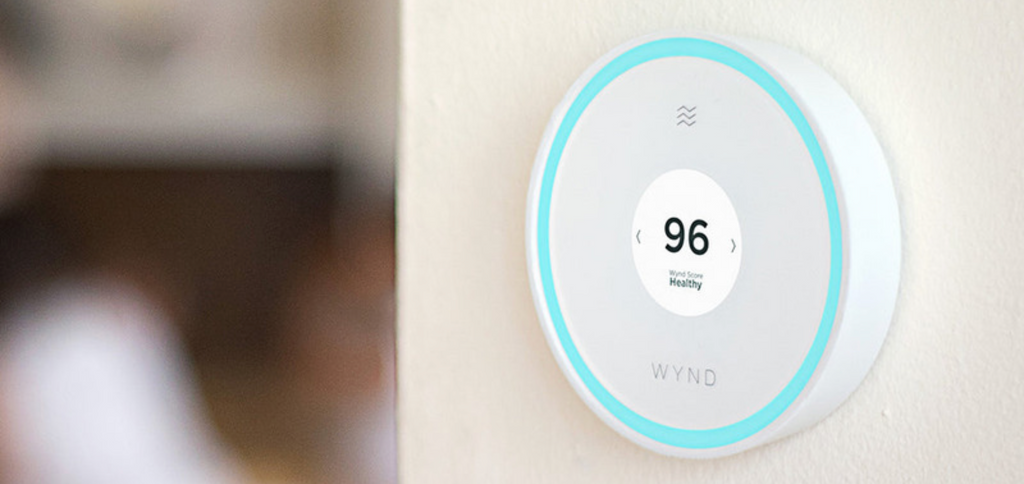
Did you know that indoor air can be up to five times more polluted than outdoor air?
You may not even realize your indoor air quality is poor. Some of the most common air pollutants in the home are:
- Toxic materials such as lead, pesticides, and asbestos
- Biological pollutants such as mold and mildew
- Natural contaminants such as pet dander and radon
- Combustion byproducts such as tobacco smoke and carbon monoxide
While indoor air quality is critical to all humans, babies and children are especially at risk. The Environmental Protection Agency notes that children are more susceptible to the effects of contaminated air because they breathe in more oxygen relative to their body weight than adults.
Just think about how small their lungs are. They breathe between 30 and 60 times per minute, whereas adults breathe 14-16 times.
So what? Poor indoor air quality can impact your child’s lung development. In some cases, children will develop allergies and immune system issues.
Luckily, you don’t need to move mountains to improve your home’s indoor air quality and create a safe environment for your child—all you have to do is follow these three tips.
1. Keep your home clean
A clean home is a healthy home. Through regular cleaning, you can get rid of pet dander, dust, pollen, and mold that lurks in your home.
Here’s your cleaning checklist:
- Wipe surfaces and walls: Your children love to touch everything—so keeping these areas clean is essential for keeping them healthy.
- Wash towels and bedsheets: Lots of harmful particles get trapped in your linen. Regular washing will reduce your baby’s exposure to them.
- Vacuum and/or sweep: Allergens like dust and dander accumulate on your floors quickly. Let your children lay and crawl on your carpets and floors risk-free. However, not all vacuums get the job done. We recommend investing in a HEPA filter vacuum to remove 99.7% of these harmful particles.
- Change air filters and monitor A/C units: Your air filters and A/C units can grow mold and mildew, which can sneak into the air and irritate your child’s lungs. Changing them regularly will keep the mold spores at bay.
2. Use non-toxic and eco-friendly products
Designing your baby’s nursery or bedroom is an exciting project, but many don’t realize that furniture and products could be reducing the air quality. Choosing non-toxic and eco-friendly products is a great way to reduce this risk.

Here’s how you can design a healthy bedroom:
- Invest in the right paint: Did you know some paints release harmful fumes for months after being used? This could lead to serious respiratory and medical conditions for your child. Choose paints clearly labeled as “No-VOC” and “No-Odor” to avoid this risk.
- Purchase eco-friendly furniture: Some baby furniture can release harmful gasses such as formaldehyde. Gasses like these can lead to lung irritation, asthma, and cancer. So what types of furniture should you buy? Purchase furniture that doesn’t contain pressed woods or heavy lacquers.
- Use low-pile carpet: If you want to carpet your baby’s bedroom, choose low-pile carpet derived from natural fibers to avoid the accumulation of harmful particles. This type of carpet is both easy to clean and durable. (Win-win!)
3. Equip your home with air purifiers
While opening windows and doors help ventilate your home, it’s not always a dependable method—especially if you live in an area with poor outdoor air quality. (From urban living, or wildfires, for example.)
We recommend installing air purifiers in your home to ensure that your indoor air quality is top-notch.
If you Google air purifiers, you’ll find hundreds of options. So when looking for the right one for your home, we suggest opting for an air purifier with an electrostatic filter. These work with static electricity to charge particles inside the air purifier. As a result, the charged particles stick to the sides of the internal filtration system and are thus removed from your indoor air.
With models like the WYND Max Air Purifier, you can purify a 1200 sq ft space in as little as 30 minutes. (Plus, they’re long lasting. You’ll only have to replace the filters twice per year.)
And just like that, you can say hello to cleaner, healthier air for your baby!
Continue to assess your indoor air quality
To keep your child happy and healthy, it’s important to continually monitor your indoor air quality. We suggest investing in indoor air quality trackers to get the most accurate answer. You’ll always be one step ahead, allowing you to make smarter decisions.
Indoor air quality: it’s more complex than you think. But with these simple moves, you can greatly reduce respiratory risks for your family. Who could say no to that?



